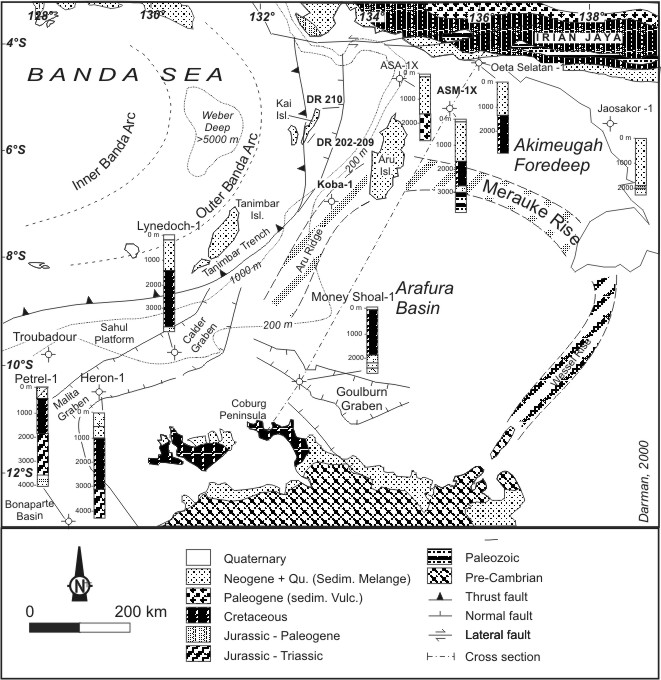|
Papakula
''Papakula'' is a monotypic genus of nursery web spiders containing the single species, ''Papakula niveopunctata''. It was first described by Embrik Strand in 1911, and is only found on the Aru Islands. See also * List of Pisauridae species This article lists all described species of the spider family Pisauridae accepted by the World Spider Catalog : A ''Afropisaura'' '' Afropisaura'' Blandin, 1976 * '' A. ducis'' (Strand, 1913) — West, Central, East Africa * '' A. rothiformis'' ... References Monotypic Araneomorphae genera Pisauridae Spiders of Indonesia Taxa named by Embrik Strand {{Pisauridae-stub ... [...More Info...] [...Related Items...] OR: [Wikipedia] [Google] [Baidu] |
List Of Pisauridae Species
This article lists all described species of the spider family Pisauridae accepted by the World Spider Catalog : A ''Afropisaura'' '' Afropisaura'' Blandin, 1976 * '' A. ducis'' (Strand, 1913) — West, Central, East Africa * '' A. rothiformis'' (Strand, 1908) — West, Central, East Africa * '' A. valida'' (Simon, 1886) (type) — West, Central Africa ''Archipirata'' '' Archipirata'' Simon, 1898 * '' A. tataricus'' Simon, 1898 (type) — Turkmenistan, China ''Architis'' '' Architis'' Simon, 1898 * '' A. altamira'' Santos, 2007 — Brazil * '' A. amazonica'' (Simon, 1898) — Brazil * '' A. brasiliensis'' (Mello-Leitão, 1940) — Brazil * '' A. capricorna'' Carico, 1981 — Brazil, Argentina * '' A. catuaba'' Santos, 2008 — Brazil, Peru * '' A. colombo'' Santos, 2007 — Brazil * '' A. comaina'' Santos, 2007 — Peru * '' A. cymatilis'' Carico, 1981 — Trinidad, Colombia to Brazil * '' A. dianasilvae'' Santos, 2007 — Peru * '' A. erwini'' Santos, 2007 — Ecuador * '' A. ... [...More Info...] [...Related Items...] OR: [Wikipedia] [Google] [Baidu] |
Pisauridae
Nursery web spiders (Pisauridae) are a family of araneomorph spiders first described by Eugène Simon in 1890. Females of the family are known for building special nursery webs. When their eggs are about to hatch, a female spider builds a tent-like web, places her egg sac inside, and stands guard outside, hence the family's common name. Like wolf spiders, however, nursery web spiders are roaming hunters that do not use webs for catching prey. Species occur throughout the world except for extremely dry or cold environments, and are common just about everywhere. Many can walk on the surface of still bodies of water and may even dive beneath the surface temporarily to escape enemies. They can jump a distance of , but they have trouble climbing extremely smooth surfaces such as glass. The name "nursery web spider" is especially given to the European species ''Pisaura mirabilis''. Adult female specimens may reach up to 15 mm in length, excluding legs. The legs of the male are ... [...More Info...] [...Related Items...] OR: [Wikipedia] [Google] [Baidu] |
Embrik Strand
Embrik Strand (2 June 1876 – 3 November 1947) was an entomologist and arachnologist who classified many insect and spider species, including the greenbottle blue tarantula. Life and career Strand was born in Ål, Norway. He studied at the University of Kristiania (now University of Oslo). Around 1900 he focused on collecting insect specimens from Norway. These are now deposited at the university's museum, where he worked as a curator from 1901 to 1903. After studying at the University of Oslo, Strand traveled in Norway from 1898 to 1903 collecting a great number of insects. For part of this time (1901–1903) he was a conservator in the museum of zoology of the university. He then left for Germany where he continued his studies of zoology at the University of Marburg (1903). He then worked with State Museum of Natural History Stuttgart (1905) and, later, that of Tübingen and then with Senckenberg Museum in Frankfurt. From 1907, he worked with Natural History Museum, Ber ... [...More Info...] [...Related Items...] OR: [Wikipedia] [Google] [Baidu] |
Monotypic Taxon
In biology, a monotypic taxon is a taxonomic group (taxon) that contains only one immediately subordinate taxon. A monotypic species is one that does not include subspecies or smaller, infraspecific taxa. In the case of Genus, genera, the term "unispecific" or "monospecific" is sometimes preferred. In botanical nomenclature, a monotypic genus is a genus in the special case where a genus and a single species are simultaneously described. Theoretical implications Monotypic taxa present several important theoretical challenges in biological classification. One key issue is known as "Gregg's Paradox": if a single species is the only member of multiple hierarchical levels (for example, being the only species in its genus, which is the only genus in its family), then each level needs a distinct definition to maintain logical structure. Otherwise, the different taxonomic ranks become effectively identical, which creates problems for organizing biological diversity in a hierarchical o ... [...More Info...] [...Related Items...] OR: [Wikipedia] [Google] [Baidu] |
Genus
Genus (; : genera ) is a taxonomic rank above species and below family (taxonomy), family as used in the biological classification of extant taxon, living and fossil organisms as well as Virus classification#ICTV classification, viruses. In binomial nomenclature, the genus name forms the first part of the binomial species name for each species within the genus. :E.g. ''Panthera leo'' (lion) and ''Panthera onca'' (jaguar) are two species within the genus ''Panthera''. ''Panthera'' is a genus within the family Felidae. The composition of a genus is determined by taxonomy (biology), taxonomists. The standards for genus classification are not strictly codified, so different authorities often produce different classifications for genera. There are some general practices used, however, including the idea that a newly defined genus should fulfill these three criteria to be descriptively useful: # monophyly – all descendants of an ancestral taxon are grouped together (i.e. Phylogeneti ... [...More Info...] [...Related Items...] OR: [Wikipedia] [Google] [Baidu] |
Aru Islands Regency
The Aru Islands Regency () is a group of about 95 low-lying islands in the Maluku Islands of eastern Indonesia. It also forms a list of regencies and cities of Indonesia, regency of Maluku (province), Maluku Province, with a land area of . At the 2011 Census the Regency had a population of 84,138;Biro Pusat Statistik, Jakarta, 2011. the 2020 Census produced a total of 102,237,Badan Pusat Statistik, Jakarta, 2021. and the official estimate as at mid 2023 was 108,834. Some sources regard the archipelago as part of Asia, while others regard it as part of Melanesia. Geography The Aru Islands are the easternmost archipelago in Maluku province, and are located in the Arafura Sea south of West Papua (province), New Guinea and north of Australia. The total area of the islands is 6,426.77 km2 (2,481.39 sq mi). The largest island is Tanahbesar (also called Wokam); Dobo, the chief port of the islands, is on Wamar, just off Tanahbesar. The other five main islands are Kola Island, Ko ... [...More Info...] [...Related Items...] OR: [Wikipedia] [Google] [Baidu] |
Monotypic Araneomorphae Genera
In biology, a monotypic taxon is a taxonomic group (taxon) that contains only one immediately subordinate taxon. A monotypic species is one that does not include subspecies or smaller, infraspecific taxa. In the case of genera, the term "unispecific" or "monospecific" is sometimes preferred. In botanical nomenclature, a monotypic genus is a genus in the special case where a genus and a single species are simultaneously described. Theoretical implications Monotypic taxa present several important theoretical challenges in biological classification. One key issue is known as "Gregg's Paradox": if a single species is the only member of multiple hierarchical levels (for example, being the only species in its genus, which is the only genus in its family), then each level needs a distinct definition to maintain logical structure. Otherwise, the different taxonomic ranks become effectively identical, which creates problems for organizing biological diversity in a hierarchical system. ... [...More Info...] [...Related Items...] OR: [Wikipedia] [Google] [Baidu] |
Spiders Of Indonesia
Spiders (order (biology), order Araneae) are air-breathing arthropods that have eight limbs, chelicerae with fangs generally able to inject venom, and spinnerets that extrude spider silk, silk. They are the largest order of arachnids and rank seventh in total species diversity among all Order (biology), orders of organisms. Spiders are found worldwide on every continent except Antarctica, and have become established in nearly every land habitat. , 53,034 spider species in 136 Family (biology), families have been recorded by Taxonomy (biology), taxonomists. However, there has been debate among scientists about how families should be classified, with over 20 different classifications proposed since 1900. Anatomy, Anatomically, spiders (as with all arachnids) differ from other arthropods in that the usual body segmentation (biology), segments are fused into two Tagma (biology), tagmata, the cephalothorax or prosoma, and the opisthosoma, or abdomen, and joined by a small, cylindr ... [...More Info...] [...Related Items...] OR: [Wikipedia] [Google] [Baidu] |


